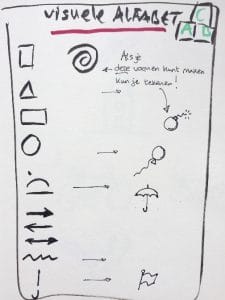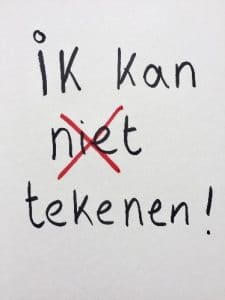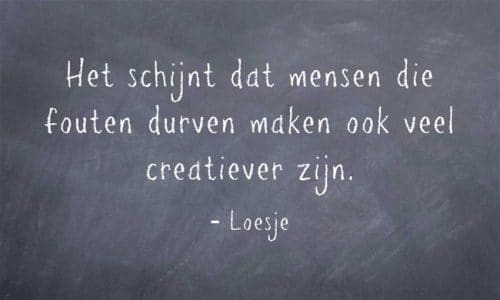The power of visual communication: visual presentation can be learned!
Visual presentation can be learned
Presentations full of slides with bullets, where everything looks alike. A vision or strategy that seems to have limited landing with employees in the organization. Meetings that result in long, unclear minutes, workshops that lack energy. Those who recognize the above may not yet have been introduced to visual communication.
Why communicate visually?
No “fake news,” but understanding each other directly and creating connection by communicating visually. Visual communication is also known as the third language. A language increasingly needed in this age of fast-paced communication and social media to share information simply and effectively. So instead of slides with a row of bullets and lots of text, powerful images that capture the essence and that stick and make an impact.
How does it work?
With visual or graphic communication, you translate complex issues into images. This has several advantages:
- Visual information you remember better
- Thoughts, ideas and plans you can visibly convey
- Complex information becomes simpler
- Increased engagement and mutual understanding
- More effective meetings through more interaction and creativity
- Better collaboration
The basis of graphic communication or presentation, as with ordinary language, is the alphabet. In this case, we call this: the “visual alphabet.
1. Visual alphabet
This “visual alphabet” consists of basic shapes that form the letters, so to speak, with which you create the images (words, concepts, themes) you want to use in your story to convey your message.
2. Image Library
You can translate the themes or issues that are part of your message or story into an image. For example, when it comes to setting a goal, you can picture for yourself in this an image of a target or dartboard. For example, an idea becomes a light bulb. By translating the parts of your story or themes into images, you build, step-by-step, your own library of images.
When you learn to communicate through these images within your organization, everyone understands what it’s about and the images, and therefore the message, stick.


Yes but I can’t draw!
Many people will exclaim, “yeah but, I can’t draw at all!”. Everyone is born with the ability to think in images, but only a few maintain and develop this as they age. The same is actually true for drawing. Everyone can draw, but chances are you stopped developing this skill as a child.
A beautiful drawing is not the goal. The purpose of a drawing or image is to communicate or understand something. You really don’t have to be Vincent van Gogh to create images. According to the 80-20 rule, if the drawing is 20% correct, 80% of people will understand the message. A drawing that is not perfect actually activates the brain of the person watching to make the missing lines and connections between shapes.
An important principle in visual communication is the SINS principle. This stands for:
- Fast – The image should be quick to draw.
- Imperfect – you don’t have to be a Van Gogh, 20% perfection already ensures 80% understanding.
- Now – Draw in the moment, that is, while telling your story.
- Simple – Keep it simple by using the visual alphabet.
Steel & part
Another principle in building your own image library is “look away!” So: steal what you can, from others, but above all, share your creations with others.
A tip: If you are looking for a symbol or icon that represents the theme or part of your story, look on Google. If you search through “Google images” and type in your theme followed by “icon” or “icon” as a search term, you will often find inspiring results already.
Practice and make mistakes
Another important principle is “make mistakes.” Do you have an image in mind of the subject at hand? Then practice drawing your chosen image. Again: it doesn’t have to be perfect, so making mistakes is part of it. Practice until you have mastered your image and can add it to your own image library. At some point you will find that it becomes easier and easier to draw this picture.

Presenting visually
It is possible to train yourself on making visualizations. “But how do I do that?” An interactive training that will get you started in this is “Visual Presentation. As of June 2018, this training is available at Symbol.
During this training you will learn how to visualize your message using simple basic shapes. In addition, you will learn how to build your own library of images and how to use them in a change story. In addition, jet take home useful templates and a lot of new inspiration.
A picture says more than 1,000 words
A familiar saying. But did you know that 90% of all information transmitted to our brains is visual? And that images are processed up to 60,000 times faster than text? Therefore, the power of visual communication as a “third language” cannot be underestimated. Indeed, let’s use that power more especially!
Latest news/blogs
Join our Orange action
From ISO 9001 to IATF 16949As consultants with expertise in ISO 9001 quality...
From ISO 9001 to IATF 16949
From ISO 9001 to IATF 16949As consultants with expertise in ISO 9001 quality...
Improving focus: Initial results from our survey
Improvement in focus: Initial results from our research Every year, organizations...


